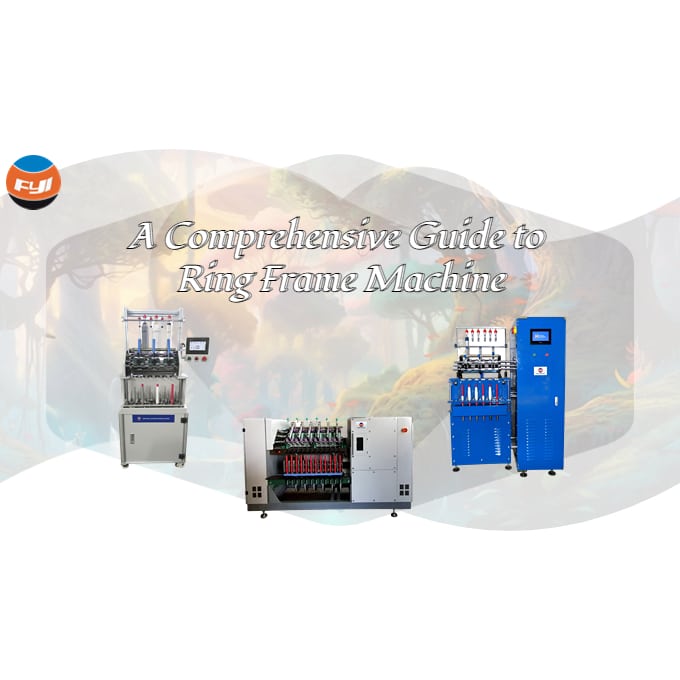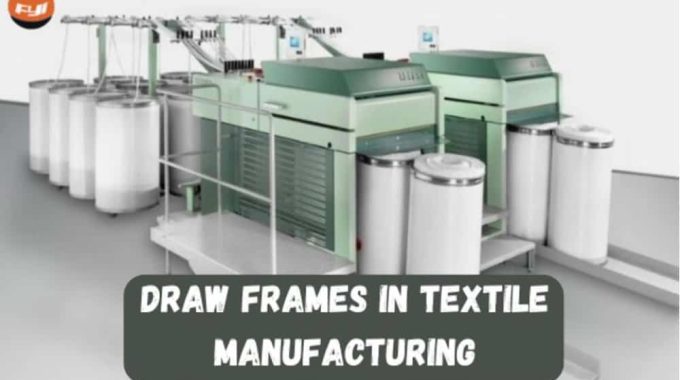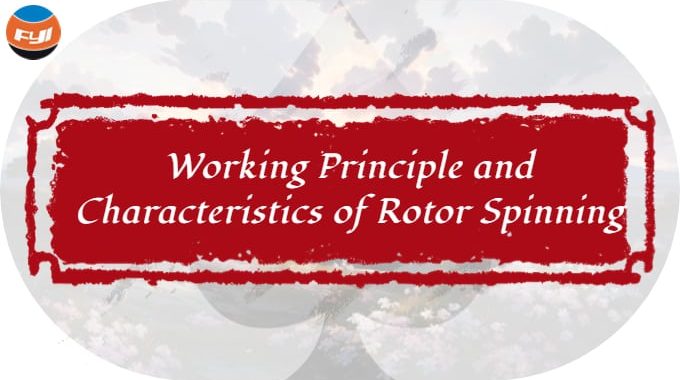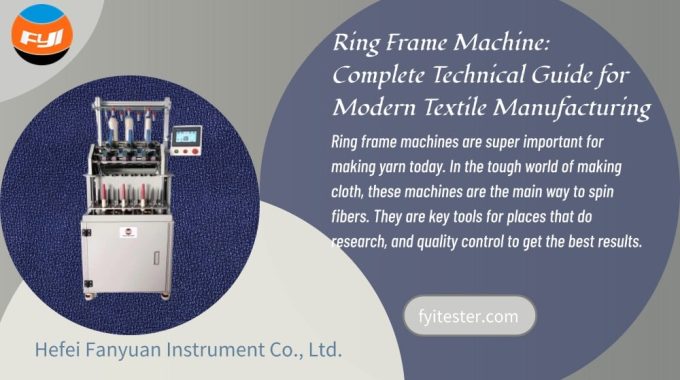
Ring Frame Machine: Complete Technical Guide for Modern Textile Manufacturing
Ring frame machines are super important for making yarn today. In the tough world of making cloth, these machines are the main way to spin fibers. They are key tools for places that do research, and quality control to get the best results.
A long time ago, in 1828, a man named John Thorp in America made the first ring spinning machine. Since then, these machines have gotten much better, but they are still very important. Now, most of the yarn made around the world, over 80%, is made using ring spinning. It’s the most common way to twist fibers into yarn and wind it up at the same time.
This simple guide will tell you all about ring frame machines. It will explain how they work and talk about the details that matter. This will help you know how to pick the right machines, how to use them, and how to take care of them. Let’s dive in:
Contents
- 1 What Defines a Ring Frame Machine?
- 2 The Critical Importance of Ring Frame Technology
- 3 Ring Frame Process Mechanics
- 4 Limitations and Challenges of Ring Frame Technology
- 5 Understanding the Three Primary Spinning Categories
- 6 Advanced Yarn Classification and Identification Methods
- 7 Systematic Yarn Differentiation Process
- 8 Modern Ring Frame Equipment: DW7040H Technical Analysis
- 9 Technical Specifications and Performance Parameters
- 10 Working Principles and Testing Methodologies
- 11 Performance Parameters and Technical Standards
- 12 Comprehensive Selection Criteria
- 13 Maintenance Requirements and Strategies
- 14 Wrap Up
What Defines a Ring Frame Machine?
A ring frame is a special machine used to make thread. It takes soft, thick strands and turns them into strong, thin thread that we can use. It does this by pulling the strands thinner, twisting them to make them strong, and then wrapping the finished thread onto spools. This machine works all the time, making thread continuously.
This machine has different important parts that work together. One part feeds in the thick strands. Another part makes these strands thinner. Then, a different part twists the thin strands so they don’t break easily. Finally, there’s a part that neatly winds the thread onto little rolls, so they are easy to move and use later.
Modern versions of this machine are big and can make a lot of thread at once. They have many spinning spots on both sides. A single machine can have hundreds or even over a thousand of these spots. This helps make a lot of thread quickly. These machines can make thread in many different thicknesses, from very thick to very fine, so they can be used for making different kinds of fabrics and threads for different uses.
The Critical Importance of Ring Frame Technology
Ring frame machines are the last and most important step in making yarn. All the work done before leads to this machine making the final yarn. Knowing how important this step is helps in planning how much to make, checking the quality, and making things run smoothly.
What happens at the ring frame is more than just making yarn. These machines decide how much your factory can make and how many people and machines you need for everything else. The quality of the yarn made here, like how strong it is, how even it is, and how it feels, affects what can be done with it later, like weaving, knitting, and dyeing.
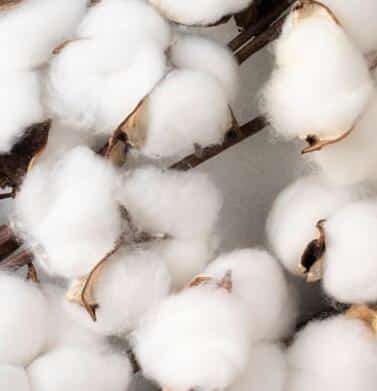
How well the ring frame works really affects how much it costs to make things. How often the fine yarn breaks is a key way to see how the whole business is doing. Also, the quality of the yarn and how much raw material is used decide how much it costs to spin the yarn.
If the ring frame works well, by setting it up just right and not wasting material, you can make things much cheaper.
Ring Frame Process Mechanics
The ring spinning process involves three fundamental operations that must be precisely coordinated to achieve optimal yarn quality and production efficiency.
1. Drafting Operation
The process of making yarn thinner is called drafting. In ring spinning machines, this thinning usually happens with a system that has three sets of rollers. The yarn material goes through these rollers, and each set spins a little faster than the one before it. How much thinner the yarn gets overall is usually between 15 and 50 times, and this depends on the starting material and how fine the final yarn needs to be. This total thinning is a result of two steps of thinning within the machine.
This system that thins the yarn uses bottom rollers made of grooved steel paired with top rollers that have a rubber covering. The hardness of these rubber top rollers is very important. The rollers in the back part are harder, around 80-85 degrees on a scale, while the rollers in the front are softer, around 63-65 degrees. This difference in hardness helps to control the fibers properly as they are being thinned and also helps to prevent damage to the fibers.
2. Twisting Mechanism
The way the thread gets twisted includes two main parts: spindle and traveler. The spindle is like a part that rotates very fast every minute from 12,000 to 20,000 spin. The traveler is a small wire that is of ‘C’ size and it moves around a ring at a speed of about 30 to 35 meters every second.
Every time the traveler goes around the ring, it puts a turn in the strand of the fibers that are being made in the thread. What is usually twisted from 200 to 2,000 twists for a thread of each meter. The exact amount depends on how thick the thread should be and what will it be used for.
How fast the spindle rotates and how fast travelers move together decide how quickly the bend is added and also how fast the thread is the wound. It is important to keep these motion correctly so that the thread is formed correctly and does not break because it is too pulled.
3. Winding Process
The winding operation creates uniform yarn packages through controlled movement of the ring rail. The ring cop gradually builds as the rail moves up and down according to predetermined patterns, ensuring proper yarn distribution and package stability.
Ring cop weights typically range from 180 to 250 grams, optimizing handling convenience while maximizing production efficiency.
Limitations and Challenges of Ring Frame Technology
Ring spinning, while common, has some built-in limits to think about when choosing machines and planning work.
One big limit is how fast it can make yarn. It’s slower than other ways. This is because of a small part called a traveler. If it spins too fast, it flies out. This is especially true for thin yarns that need more twist. Also, the yarn spools are small, so workers have to change them often, which takes time and people. Newer machines try to fix this with robots, but it’s still a basic issue.
Ring spinning also uses a lot of power because many parts spin very fast all the time. Power bills can be a big part of the costs. The way the yarn winds also makes air push against it, needing more power. Special systems can help a bit, but they can’t fully stop this power use.
Over time, the parts that touch the yarn, like rings and travelers, wear out. This can change how tight the yarn is and even damage it. Also, if the spinning parts aren’t lined up perfectly after a lot of use, the yarn can become uneven. So, it’s important to check and fix things often to keep the yarn quality good.
Understanding the Three Primary Spinning Categories
Modern spinning technology encompasses three distinct categories, each offering unique advantages for specific applications and production requirements.
1. Frame Spinning Systems
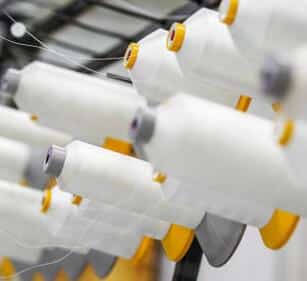
Frame spinning represents traditional discontinuous spinning technology where yarn formation and winding occur in separate operations. This system provides excellent yarn uniformity due to the horizontal twist insertion method and extended twist equilibration time. The extended drafting zone allows superior fiber control, particularly beneficial for processing difficult fibers or achieving extremely fine yarn counts.
However, frame spinning systems require more complex handling procedures and typically operate at lower production rates than continuous systems. They find primary application in specialty yarn production where quality takes precedence over production speed.
2. Cap Spinning Technology
Cap spinning offers another discontinuous approach with characteristics similar to frame spinning but utilizing different mechanical principles. The spinning mechanism provides good twist balance and yarn uniformity, making it suitable for high-quality yarn production.
These systems maintain relevance in niche applications where specific yarn characteristics are required, though their use has declined with advances in ring spinning technology.
3. Continuous Ring Spinning
Ring spinning is the main way yarn is made today. It’s good because it can handle many materials, makes good quality yarn, and can make a lot of it. It works without stopping, so the yarn isn’t touched much between twisting and winding. This means less work is needed, and the yarn is less likely to get damaged.
Even though other ways might make slightly more even yarn, ring spinning has shorter areas where it controls the yarn. This helps keep the yarn from breaking as often. Because of this and because it can run faster, most companies that make yarn choose ring spinning.
Advanced Yarn Classification and Identification Methods
Understanding yarn types produced by different spinning systems becomes crucial for quality control, process optimization, and end-use suitability assessment.
1. Ring Spinning Yarn
Ring spun yarns exhibit complete untwistability, meaning the entire yarn structure can be untwisted to reveal individual fibers. After complete untwisting, the yarn loses all strength and cohesion, confirming the ring spinning origin. This characteristic results from the uniform twist distribution throughout the yarn structure.
Ring spun yarns typically demonstrate excellent strength properties due to optimal fiber orientation and twist distribution. The surface characteristics show good fiber integration with minimal protruding fibers, contributing to smooth fabric appearance and superior dyeing uniformity.
2. Air Jet Spinning Yarn
Air jet spinning, also known as rotor spinning, produces yarns with distinctive characteristics that affect both processing and end-use performance. These yarns cannot be completely untwisted as a continuous structure—only localized sections untwist completely, creating weak nodes throughout the yarn length.
The unique structure results from the air jet spinning mechanism where fibers are deposited and twisted in a spinning chamber. This process creates periodic variation in twist distribution, leading to characteristic strength variations along the yarn length.
3. Siro Spinning Yarn
Siro spinning represents an advanced form of ring spinning where two roving strands are simultaneously fed and combined into a single yarn. The resulting yarn maintains complete untwistability like conventional ring spinning but exhibits superior properties due to the dual-strand structure.
Visual identification of Siro spun yarn reveals an apparent two-ply construction that actually represents a single yarn. This technology produces yarns with reduced hairiness, improved strength, and better uniformity compared to conventional ring spinning, making them ideal for high-performance applications.
4. Vortex Spinning Yarn
Vortex spinning creates yarns with unique structural characteristics where the surface appears completely untwisted while the core maintains twisted structure. This dual-zone construction provides distinctive performance properties.
When examining vortex spun yarn, the outer surface shows minimal twist while the inner core retains significant twist and strength. This structure contributes to excellent abrasion resistance and reduced hairiness while maintaining adequate tensile properties.
Systematic Yarn Differentiation Process
Applying a systematic approach to yarn identity ensures accurate classification and proper handling in your operation:
Step 1: Initial Untwisting Test – Start by trying to open a yarn sample completely. If only partially with unwanted weak nodes, identify the yarn as an air jet spoon and proceed with the appropriate processing parameters.
Step 2: Complete Untwisting Assessment – For yarns that untwist completely, evaluate the resulting fiber arrangement and residual strength. Complete loss of strength indicates ring spinning or Siro spinning origin.
Step 3: Strength Evaluation – Test unwanted yarn for residual power. Important remaining strength suggests vortex spinning, while complete power loss is confirmed by ring or siro spinning origin.
Step 4: Structure Analysis – Check the zero-power yarn, completely untwisted for the vessel appearance. The presence of two different strand structures identifies the siro-spinning, while the single-strand appearance confirms the traditional ring spinning.
Modern Ring Frame Equipment: DW7040H Technical Analysis
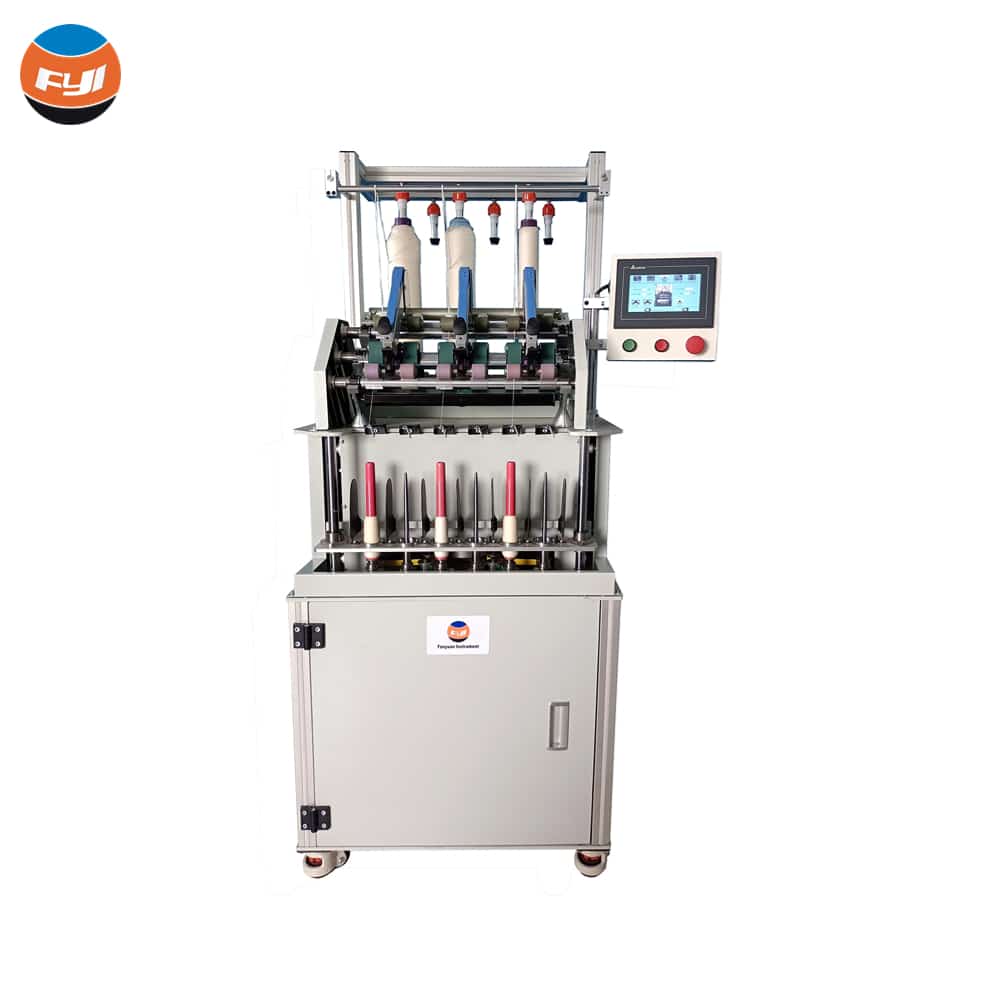
The DW7040H Lab Ring Spinning Frame represents state-of-the-art technology designed specifically for research institutions, educational facilities, and quality control laboratories. This equipment incorporates advanced control systems and precision components that make it ideal for both teaching applications and research investigations.
Control System Technology
The machine has integration with the delta brand PLC (Programable Logic Controller) Sarvo Motor Drive, which provides accurate control over all operating parameters. The PLC system enables accurate speed regulation, maintains the speed of spindle rotation within ± 1% tolerance – an important requirement for research applications where parameter stability is necessary.
The touch screen interface serves as the primary human-machine interaction point, allowing operators to input technical parameters, monitor machine status and adjust operating settings in real time. This user -friendly approach reduces training requirements by providing wide operating control.
Mechanical Design Excellence
The aluminum profile frame construction with four integrated casters provides both stability and mobility, essential features for laboratory environments where equipment may require repositioning for different experiments or demonstrations. The modular design approach enables independent drive systems for drafting, spindle, and flyer operations, allowing detailed study of individual system contributions to yarn formation.
The multi-functional design philosophy emphasizes ease of maintenance and cleaning—critical considerations for equipment that must operate reliably in research environments while providing access for detailed examination of operational principles.
Technical Specifications and Performance Parameters
Understanding the detailed specifications of modern ring frame equipment helps you evaluate suitability for specific applications and compare alternatives effectively.
1. Operational Capacity
The DW7040H operates with six spindles, providing sufficient capacity for meaningful research while maintaining manageable scale for educational applications. This spindle count allows statistical analysis of results while keeping material requirements reasonable for laboratory budgets.
The machine accommodates fiber lengths from 22 to 50mm, covering the full range of natural and synthetic fibers commonly used in textile production. This versatility makes it suitable for comparative studies across different fiber types and blends.
2. Drafting System Specifications
The drafting arrangement utilizes 25mm diameter rollers throughout all positions, ensuring consistent fiber handling characteristics. The center distances—43mm between front and middle rollers, 143mm between front and back rollers—provide optimal geometry for fiber control while minimizing stress concentrations that could cause fiber breakage.
The spring cradle pressure system applies controlled loading to ensure proper fiber grip without excessive compression that might damage sensitive fibers. Draft range capability from 10 to 50 accommodates production of yarn counts from coarse industrial applications to fine textile grades.
3. Twisting and Winding Capabilities
Twist setting range from 200 to 2,000 twists per meter covers all commercial yarn applications, from low-twist yarns for soft hand feel to high-twist yarns for strength-critical applications. The S/Z twist direction capability enables production of both standard and specialized yarn constructions.
Maximum spindle speed of 12,000 rpm provides representative production conditions while maintaining safe operation for research environments. The 70mm spindle gauge matches commercial equipment standards, ensuring research results translate effectively to production applications.
Working Principles and Testing Methodologies
Understanding the working principles and testing methodologies is essential, so let’s have a look:
1. Fundamental Operating Principles
Understanding how ring frame machines work helps make them run better and fix problems that affect yarn quality when making it or doing experiments.
The system that feeds the material must give a steady flow to keep the yarn the same. How tight the material is matters a lot because if it changes, the yarn will be uneven. Rollers keep the material going straight even as it gets smaller.
Newer systems watch how tight the material is to find problems with the material or the machine. This helps a lot in experiments where everything needs to be the same.
To make the yarn thinner, different rollers move at different speeds. How fast they move compared to each other changes how well the thinning works and how the fibers line up in the yarn. Knowing this helps make the best thinning for different materials and yarns.
Usually, most of the thinning happens first, then a little more at the end. This stops the fibers from getting too stressed while still controlling them. If this isn’t right, the yarn can be uneven and break more easily.
How fast the spindle turns, how heavy a small part is, and the size of a ring all change how well the yarn gets twisted and how tight it is. Heavier parts guide the yarn better but cause more friction and heat. The ring size changes how fast that small part moves, which changes how fast the yarn gets twisted.
As the yarn winds, it forms a shape that pulls on the yarn. Rings help control this pull by making the shape smaller, which lowers the total pull while still guiding the yarn well.
2. Comprehensive Testing Methodologies
Implementing careful testing helps check how well ring frames work and their quality all the time.
Checking yarn regularly gives important info to make things better. Pulling tests show how strong yarn is based on twist and how it’s made. Evenness tests find changes that might mean machine or material problems.
Measuring hairiness is key for yarn used in good fabric. Too much hairiness can cause issues later and change how the fabric looks.
Watching machine performance helps predict when maintenance is needed and makes things run better. Checking spindle speed keeps twist consistent, and looking at power use can find machine problems early.
Watching the temperature of parts like travelers and bearings warns of wear needing fixing. Vibration checks help find alignment or bearing issues that could hurt yarn quality.
For research, studying how settings relate to yarn is important. Experiment design helps find these links efficiently.
Looking at results with numbers shows how to make better choices and set limits for making yarn.
Performance Parameters and Technical Standards
Modern spinning machines need to follow set rules for safety, how well they work, and fitting with other machines. Knowing these rules helps you choose machines and follow laws.
Safety rules cover keeping workers safe and machines working well. Electrical parts must follow rules for factories, like having emergency stops. Moving parts need covers, and machines should stop if something goes wrong.

How well they work rules say the yarn must be strong and even. Machines must meet set tests. Rules also cover using less energy and material waste.
Machines must work with others in the factory. This means things like the size of yarn packages being the same. Automated machines need to talk to factory computers.
To see how good a spinning machine is, we look at how much yarn it makes per hour and how much energy it uses. We also check how much waste it makes. Yarn quality is measured by strength and evenness. We also look at how long the machine works without breaking down.
Comprehensive Selection Criteria
Selecting appropriate ring frame equipment requires careful evaluation of multiple factors that affect both initial investment and long-term operational costs.
1. Technical Requirements Assessment
Begin by defining specific technical requirements including yarn count range, production capacity, and quality specifications. Consider future requirements as well as current needs to ensure equipment longevity and adaptability.
Fiber type compatibility affects equipment selection significantly. Different fibers require specific drafting arrangements, twist levels, and handling characteristics that may influence equipment choice.
2. Economic Analysis Framework
Total cost of ownership analysis includes initial equipment cost, installation expenses, training requirements, and ongoing operational costs including energy, maintenance, and spare parts. This comprehensive approach ensures realistic cost comparisons between alternatives.
Productivity analysis should consider both production rates and quality achievement. Higher initial costs may be justified by improved quality or efficiency that reduces downstream processing costs or increases product value.
3. Strategic Considerations
Technology advancement trends affect equipment selection decisions. Modern equipment with advanced control systems may provide better adaptability to future requirements and improved integration capabilities with factory automation systems.
Supplier support capabilities including training, maintenance support, and spare parts availability significantly affect long-term operational success. For research equipment like the ring frame machine, ongoing technical support becomes particularly important for maximizing educational and research value.
Maintenance Requirements and Strategies
Effective maintenance strategies ensure reliable operation while minimizing total cost of ownership throughout equipment life.
1. Preventive Maintenance Programs
Systematic preventive maintenance programs address routine service requirements before they cause operational problems. These programs typically include regular lubrication, component inspection, and adjustment procedures that maintain optimal performance.
Wear component replacement schedules help manage maintenance costs while ensuring consistent quality. Components such as travelers, rings, and top rollers require regular replacement based on usage patterns and quality requirements.
2. Predictive Maintenance Technologies
Modern condition monitoring systems enable predictive maintenance strategies that optimize maintenance timing based on actual equipment condition rather than arbitrary schedules. Vibration monitoring, temperature measurement, and performance parameter tracking provide early warning of developing problems.
These technologies prove particularly valuable for research equipment where unplanned downtime can disrupt experimental programs and affect research schedules.
3. Cost Management Strategies
Spare parts inventory management balances availability requirements against inventory costs. Critical components require immediate availability while routine maintenance items can be managed with longer lead times.
Maintenance skill development ensures effective problem resolution while minimizing external service costs. Training programs should address both routine maintenance procedures and troubleshooting techniques for common problems.
Wrap Up
Ring frame machines are still super important for making thread in factories. They can make many kinds of good thread efficiently. Knowing how they work helps pick the best machines and keep them running well, which is key to staying ahead.
Soon, these machines will use more robots, smart systems, and eco-friendly ways. This will keep them useful as factories want to be faster and greener. To do well, you need to really know how they work and how to make them even better.
If you want good ring frame machines, choose companies that have been around a while. They have good machines and will help you. FYI Tester is a partner you can trust, with great lab spinning tools and support.
Ready to enhance your spinning capabilities? Contact FYI Tester today to discover how our advanced ring frame machines can transform your production outcomes.
